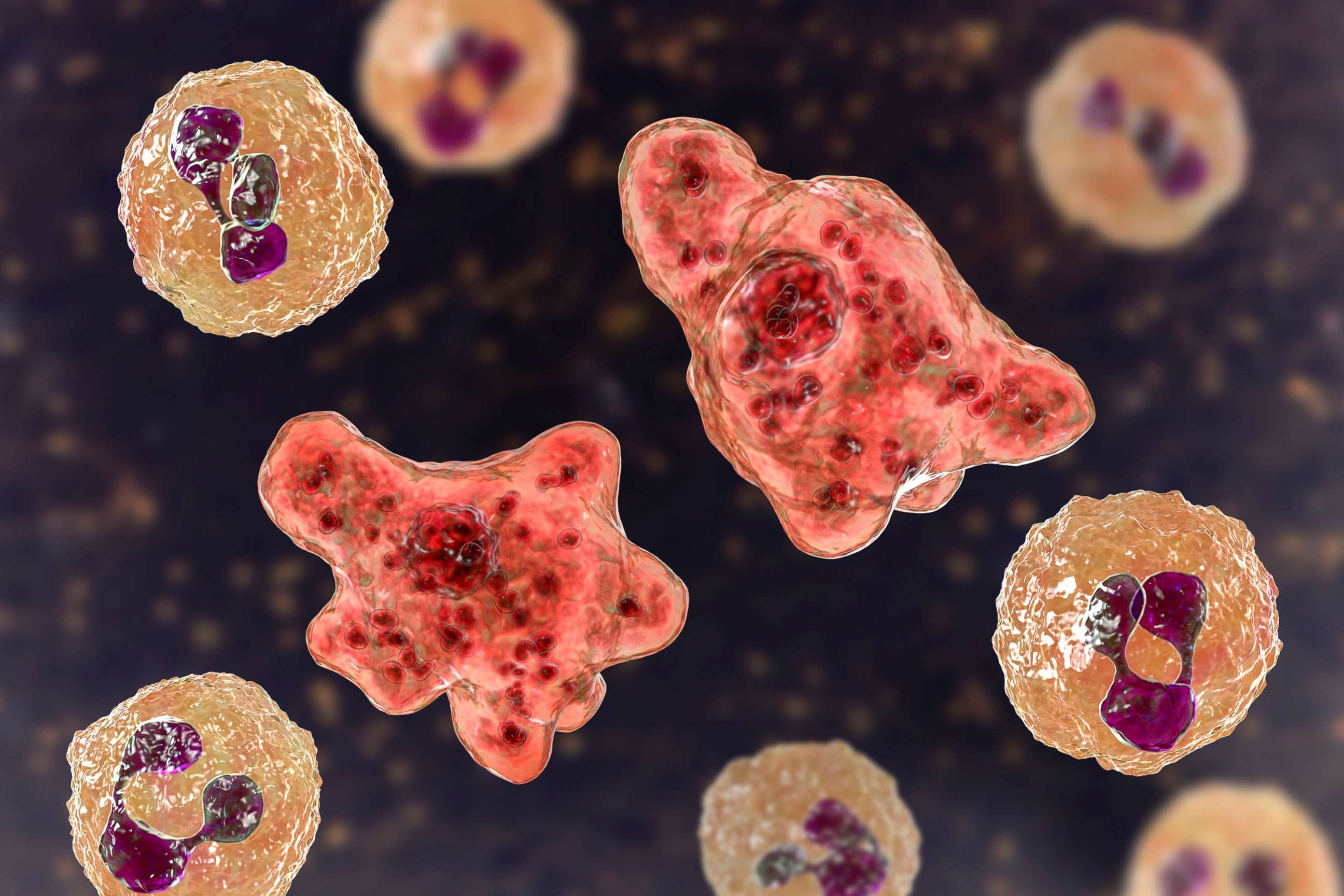Risk of brain-eating amoeba, flesh-eating bacteria may increase due to climate change: Experts
Infections are rare, but pathogens and bacteria thrive in warmer waters.
The sweltering summer heat may send swimmers diving head-first into the nearest body of water, but climate change may contribute to life-threatening risks for swimmers as waterborne pathogens thrive and multiply faster in increasingly warming waters, experts said.
Scientists are becoming increasingly concerned about the possibility for dangerous pathogens, such as Naegleria fowleri, a brain-eating amoeba, and Vibrio vulnificus, a flesh-eating bacteria, said Dr. Sandra Gompf, an infectious disease specialist and professor of medicine at the University of South Florida.
These pathogens move fast and can kill quickly.
Once diagnosed, Naegleria fowleri is very difficult to treat, said Darien Sutton, a Los Angeles emergency medicine physician and ABC News medical contributor. Once it enters the brain, it causes a form of meningitis, and once the patient is exhibiting symptoms it's often too late to save them.
Vibrio vulnificus infections can lead to necrotizing fasciitis, a severe infection in which the flesh surrounding an open wound dies, according to the Centers for Disease Control and Prevention.
Warming temperatures create ideal conditions
A warmer planet creates conditions in which pathogens thrive.
"It's intensifying the opportunity, and creating more opportunity, for these harmful things to cross our paths," Melissa Baldwin, director of Florida Clinicians for Climate Action, told ABC News.
Not only are temperatures hotter, but they are hotter for longer periods of time, which allows the pathogens to grow, Gompf said.
Infections of Naegleria fowleri in the past have been rare in North America, but likely because in the past it was not common for waters to reach warm enough temperatures to host it, Sutton said.
Over the last 10 years, cases increasingly have been diagnosed outside of the typical range, which historically has been in southern states such as Florida and Texas, Gompf said.
Cases have been diagnosed as far north as Minnesota and Maryland, a "red flag" that "should signal to people that a problem is brewing," Sutton said.

In addition, overflow water from extreme flooding can facilitate the transmission of pathogens, said Yun Shen, an assistant professor at the University of California, Riverside who researches pathogen transmission across water and air.
It's the opposite problem in the West, where drought conditions are causing water reservoirs to condense, which then increases the concentration of pathogens and creates a higher likelihood that someone will be affected through municipal water distribution, Shen said.
Vibrio vulnificus thrives in brackish waters, so as climate change brings more strong hurricanes that forces more salt water to mix with fresh, it's creating large brackish areas and the conditions where the Vibrio can flourish, Baldwin said.
Vector-borne and insect-borne illnesses also are expected to increase as a result of warming temperatures, Gompf said.
"Those warmer conditions are really key to a lot of these harmful pathogens," Baldwin said.
Infections are rare -- not impossible
Gompf's 10-year-old son, Philip, tragically died after contracting Naegleria fowleri while inner-tubing on a lake in Polk County, Florida, in 2009.
Gompf and her husband, a hospital pediatrician, knew the risks but allowed their children to go under "a little bit of a false comfort level" due to how rare contracting it is, she said.
Between 2010 and 2019 there were just 34 deaths due to brain-eating amoeba, despite millions of recreational water exposures each year, according to the CDC.
About five days after exposure, Philip became ill, Gompf said. He developed a headache, which was unusual for him, but did not have a fever or any apparent symptoms of meningitis, she said.
The next morning, Philip was difficult to arouse and was not able to bend his neck forward, Gompf said. After being rushed to the hospital, he tested an "extraordinary level" of inflammation in his spinal fluid.
Philip became brain dead within three days of the initial headache, Gompf said. An autopsy found a "wide-spread infection" of amoeba in organs other than his brain.
"As you might imagine, that was devastating to us," Gompf said. "That just underscored my concern about climate change. Certainly, the one thing that we want is for no one to have to deal with having this happen to their child."

More than 97% of reported cases of Naegleria fowleri are fatal, with only four survivals of 148 known infections between 1962 and 2019, according to the CDC.
However, cases are likely unreported because it is so difficult to diagnose, Gompf said.
The amoeba enters the brain through a forceful push of water high into the naval cavity, Gompf said, adding that it is important to plug one's nose -- or avoid putting your head underwater all together -- when swimming in freshwater 76 degrees Fahrenheit or warmer. Ingesting Naegleria fowleri is not harmful.
The pathogen can linger in any body of freshwater, including lakes, ponds, rivers, underchlorinated water parks and municipal water, which is why it's imperative to boil water -- or use distilled water -- when using a neti pot.
Vibrio vulnificus tends to cause diarrheal illness in most people, but some can experience severe bloodstream infection or gangrene, Gompf said. People with underlying conditions such as diabetes, liver disease or poor immunity are more likely to become infected with Vibrio vulnificus.
"With the continuing climate change, this is not something that's just going to go away," Sutton said. "It is likely that as temperatures increase, water will become more of a hospitable environment to harbor organisms, not just like this, but other bacteria and pathogens that can harm young kids who are just trying to have fun in a lake in the summer."




